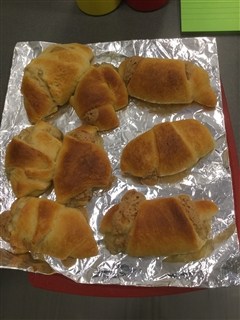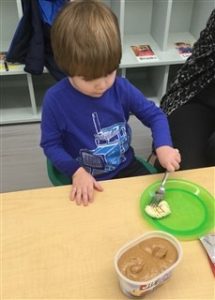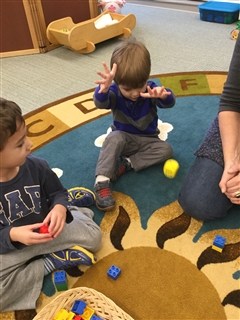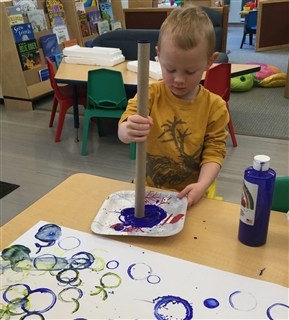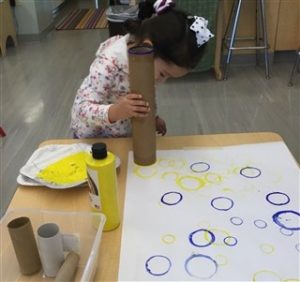Written by an Acorn Parent
I am grateful for a Christian Science healing our family recently witnessed, demonstrating freedom over what is commonly termed “separation anxiety.” I’m grateful to share some of my learnings in the hopes of encouraging others who are prayerfully addressing this topic for their own families, and for families around the world.
Beginning when one of our children was about nine months old and for months thereafter, he would cry loudly and for long time periods if my husband or I left a room he was in, or if friends or extended family tried to hold him or play with him, or if we left him in our Christian Science branch church’s Children’s Room during a church service. This may not seem like a big deal, but these loud, lengthy crying jags seemed to challenge my husband and me, our extended family, and the Children’s Room attendants.
Loved ones who were aware of the challenge offered a variety of practical human steps that they felt might help encourage our child to feel freer with other care providers and when he was on his own in a room for a brief period. We were earnestly praying during this time and tried some of these practical steps as we were so led. But nothing seemed to help. Meanwhile, each week at church my husband and I continued receiving text messages from Children’s Room attendants asking us to return after we had been gone for 10 to 15 minutes, as our child had not settled.
During these months I was frequently on my knees in prayer (figuratively, and sometimes literally), listening for our Father-Mother God’s guidance. As a student of Christian Science, it is my daily privilege to claim and affirm each family member’s inherent right to know and hear God at every moment. It is my duty to defend myself against aggressive mental suggestion. I had the special opportunity to support our children in this important daily prayerful work, too.
During this time, God helped me to affirm what is true about this child’s identity. He is whole and free, complete, and fully developed. He is not a helpless babe who is in the process of developing, as the material world would attempt to inform us. This perfect child of God hears and understands God, with a firm grasp on the spiritual facts of his identity as God’s son.
I was also led to prayerfully affirm that no intermediary is needed. God communicates with each one of us and His angel messages are understood. On page 72 of Science and Health with Key to the Scriptures, Mary Baker Eddy writes, “Not personal intercommunion but divine law is the communicator of truth, health, and harmony to earth and humanity.” Our child, who inherently manifested God’s loving care, did not need me to interpret his Father-Mother.
One day while I was praying, God revealed to me that I needed to stop beholding in thought the false images of a crying child, a concerned mother, and an overwhelmed family member or Children’s Room attendant. I affirmed that I could not be duped into giving audience to mortal mind’s suppositions – including fearfully anticipating my child’s tears before we even showed up at church. We build on the rock of Truth, not on the shifting sands of material supposition. The only reality – the only actual activity happening – is the expression of Love. I could not be made to be confused by false sense and then act on a faulty basis. As we read in The First Church of Christ, Scientist, and Miscellany on page 274, “To begin rightly enables one to end rightly, and thus it is that one achieves the Science of Life, demonstrates health, holiness, and immortality.”
As I prayed about this further, I acknowledged God as the only care giver and I began gaining a deeper understanding that man is never separate from God. I am never separate from God. My child is never separate from God. Because we are never separate from God, the role of the members of our household, our extended family, and the Children’s Room attendants was simply to behold God’s perfect, beloved child who is inherently joyous, alert, harmonious, and at peace. We were simply being called to witness the revealing of this child’s true nature.
Next, I was gently reminded that I needed to more clearly defend my love for Christian Science and my desire to serve church. If that meant prayerfully supporting the church service from the Children’s Room, I was ready to do it. Every aspect of church supports every other aspect – and there is no place in church that is less important or more important. I was willing to serve wherever I was needed. But God lovingly reminded me to be alert to any sneaky suggestions (or situations) that would attempt to redirect me from serving where I was needed. I knew I needed to remain alert that no imposition and no claim of personal sense could keep me from serving church in the ways God had in store for me.
As I continued to pray, new practical ways to support our child unfolded harmoniously. We were led to stop carrying out many of the well-intentioned suggestions that had been presented to us by loved ones. We continued listening for God’s guidance. Around that time, we were led to enroll our child in The Principia School’s Acorn program. Each week for part of Play-In, Acorn students have independent learning time with teachers while their parents attend a metaphysically-based seminar in another room. Acorn has afforded my child a natural weekly opportunity to be cared for by others.
Around the same time, our church’s Children’s Room Committee Chairperson invited the committee to address the claim of “separation anxiety” impersonally. Several committee members responded enthusiastically. Just a few days later – that very next Sunday – there was a palpable shift in our Children’s Room that everyone recognized and attributed to God. Our child – and another child who had also seemed to be challenged when their parents stepped away – remained in the Children’s Room without parents present for the full church service. This was a first for our child! There were some tears, but the attendants on duty were prayerfully ready to meet those suggestions of upset, and within 15 minutes all of the children were happily playing. Over the next three weeks, our child continued playing in the Children’s Room without parents and with mere moments of tears at drop-off. By the fifth week and thereafter, he joyously played in the Children’s Room with no tears at all. At home, this child spontaneously began playing independently. He no longer cried when either parent left the room and he expressed joy and freedom when approached by extended family members and our friends who wanted to hold him or play with him.
The healing was not that our child stopped crying in the Children’s Room at church, or that I can leave him in a room at home without him sobbing. While these things are great, they are simply demonstrative of the much bigger lesson that I feel I am just starting to learn more about: that there is no separation from good, God. We can never be separate from our Maker, from our beloved Father-Mother. Nobody can ever be separated from Love. World thought might suggest that this was just a coincidence – that the child grew out of their upset or simply got used to the Children’s Room or being on their own for a bit…but after having worked through this challenge for about seven months, I can confidently state that it was Love’s healing touch and only God that afforded this demonstration.
The second verse of Hymn 232 (Christian Science Hymnal) beautifully sums up my learnings: “O Light, in Thy light we can see / That man is ever one with Thee. / In love our lives Thou dost enfold, / And now our waiting hopes behold / That man is God’s own child.”

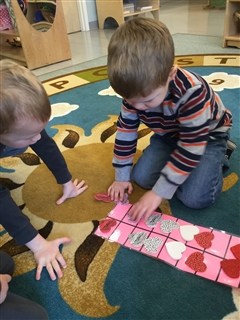
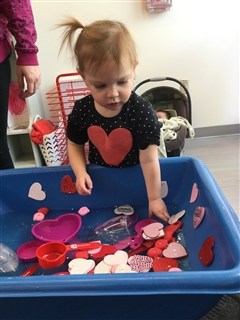
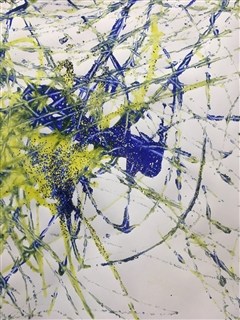
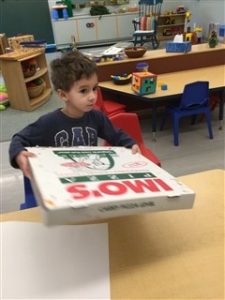 Pour paint into the bowls. Place 1-2 marbles in each color paint. Lay a piece of construction paper on the bottom of the box. Using a spoon, drop 1-2 marbles from one of the colors of paint into the box and close the lid. Invite your child to shake the box vigorously. Open the box and place the marbles back in the paint. Next, drop 1-2 marbles from the yellow paint into the box and shake. What happens when the yellow and blue paints mix? Continue the process until your child is satisfied with the painting.
Pour paint into the bowls. Place 1-2 marbles in each color paint. Lay a piece of construction paper on the bottom of the box. Using a spoon, drop 1-2 marbles from one of the colors of paint into the box and close the lid. Invite your child to shake the box vigorously. Open the box and place the marbles back in the paint. Next, drop 1-2 marbles from the yellow paint into the box and shake. What happens when the yellow and blue paints mix? Continue the process until your child is satisfied with the painting. 